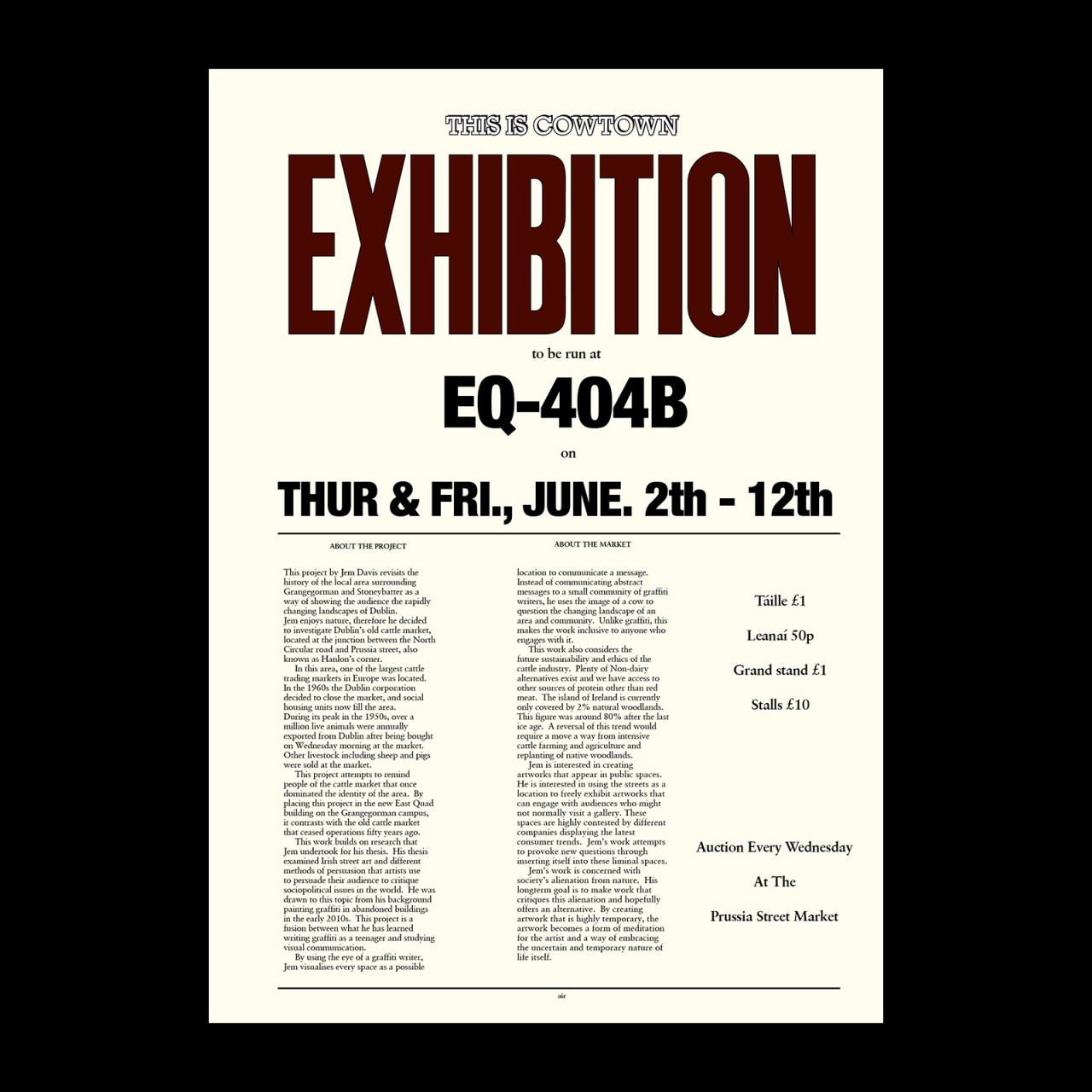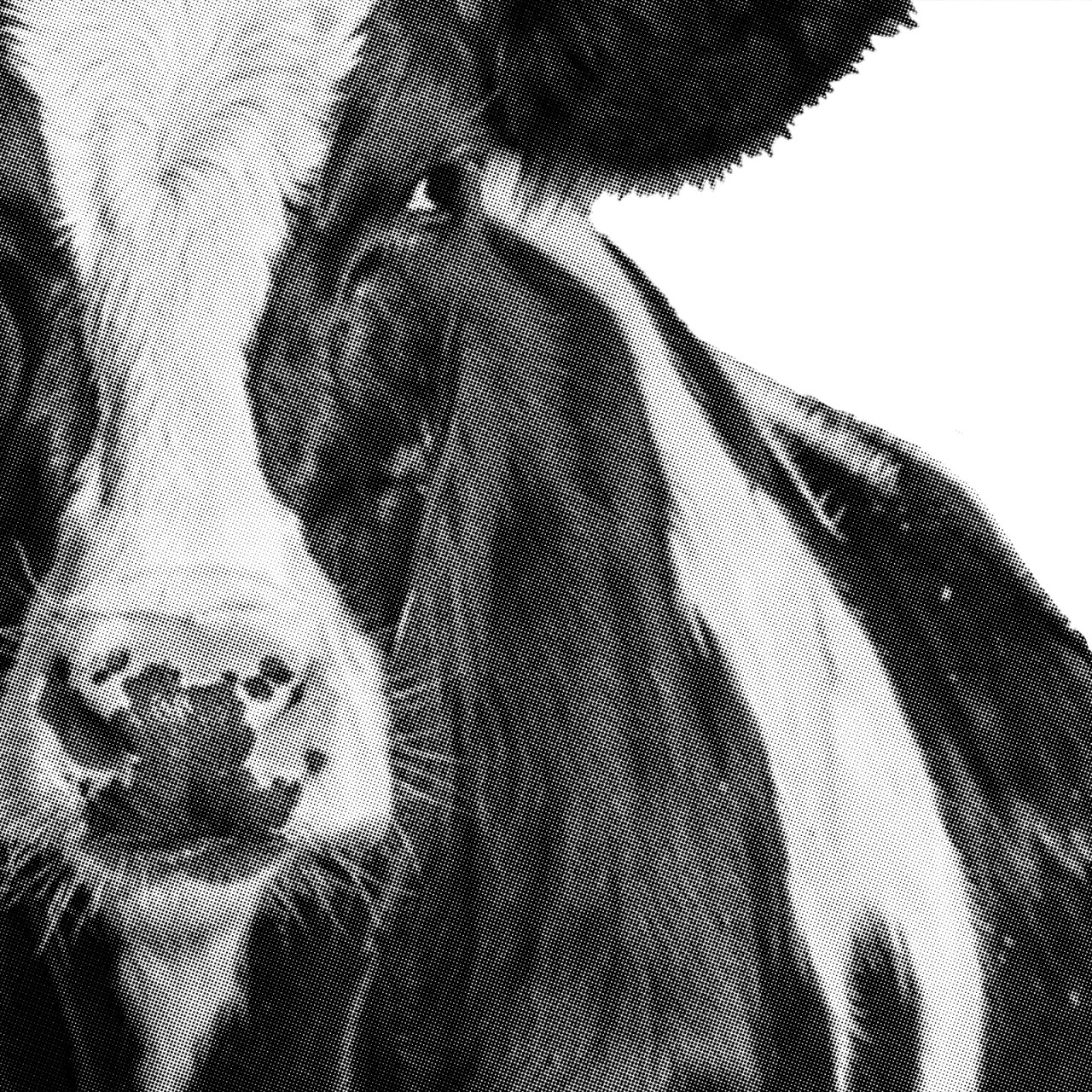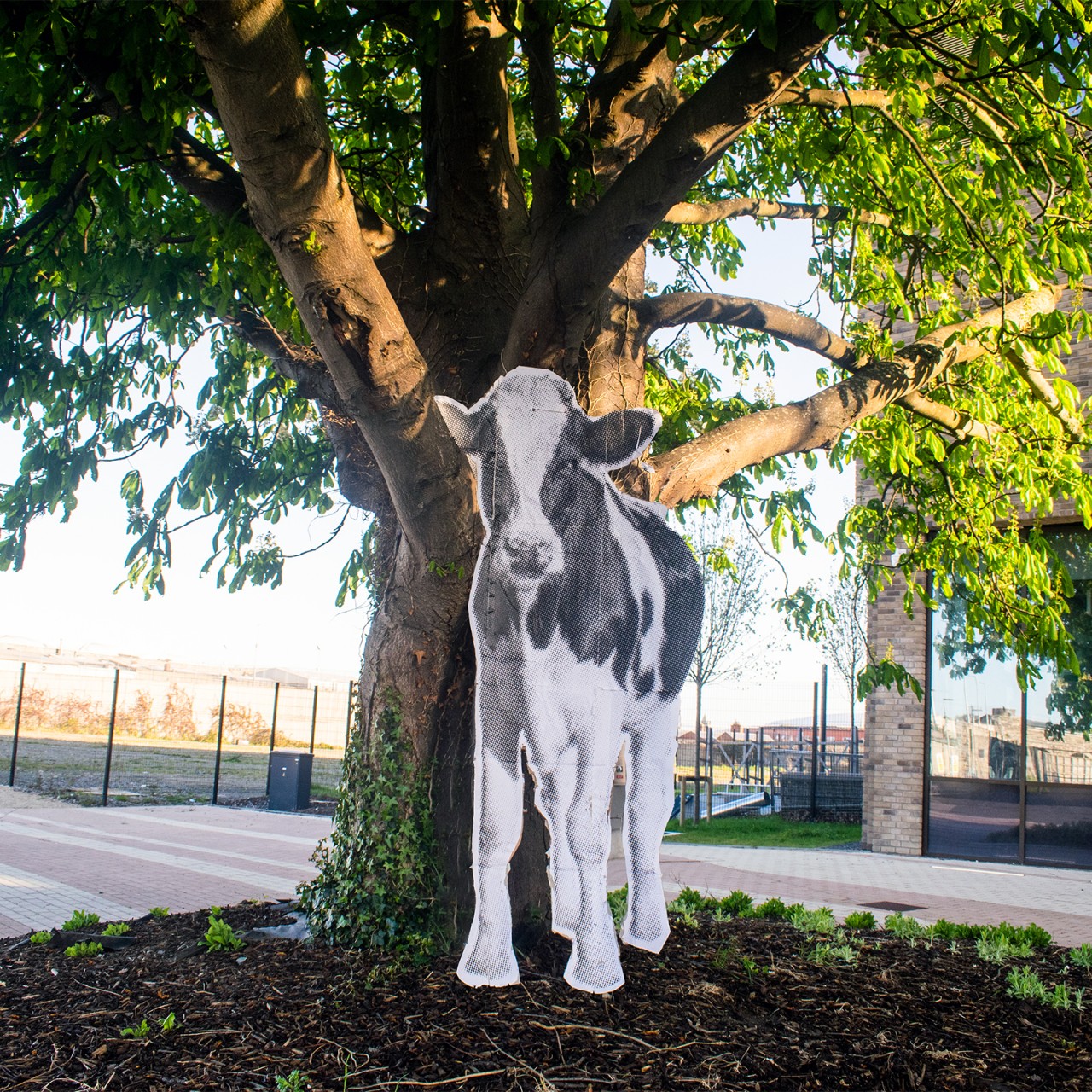Cowtown
This project by Jem Davis revisits the local history of the area surrounding Grangegorman and Stoneybatter as a way of showing the audience the rapidly changing landscapes of Dublin.
Jem enjoys nature, therefore he decided to investigate Dublin’s old cattle market, located at the junction between the North Circular Road and Prussia Street, also known as Hanlon’s corner.
In this area, one of the largest cattle trading markets in Europe was located. In the 1960s the Dublin corporation decided to close the market, and social housing units now fill the area.
During its peak in the 1950s, over a million live animals were annually exported from Dublin after being bought on Wednesday morning at the market. Other livestock including sheep and pigs were sold at the market.
This project attempts to remind people of the cattle market that once dominated the identity of the area. By placing this project in the new East Quad building on the Grangegorman campus, it contrasts with the old cattle market that ceased operations fifty years ago.
This work builds on research that Jem undertook for his thesis. His thesis examined Irish street art and different methods of persuasion that artists use to persuade their audience to critique sociopolitical issues in the world. He was drawn to this topic from his background painting graffiti in abandoned buildings in the early 2010s. This project is a fusion between what he has learned writing graffiti as a teenager and studying visual communication.
By using the eye of a graffiti writer, Jem visualizes every space as a possible location to communicate a message. Instead of communicating abstract messages to a small community of graffiti writers, he uses the image of a cow to question the changing landscape of an area and community. Unlike graffiti, this makes the work inclusive to anyone who engages with it.
This work also considers the future sustainability and ethics of the cattle industry. Plenty of Non-dairy alternatives exist and we have access to other sources of protein other than red meat. The island of Ireland is currently only covered by 2% natural woodlands. This figure was around 80% after the last ice age. A reversal of this trend would require a move a way from intensive cattle farming and agriculture and replanting of native woodlands.


